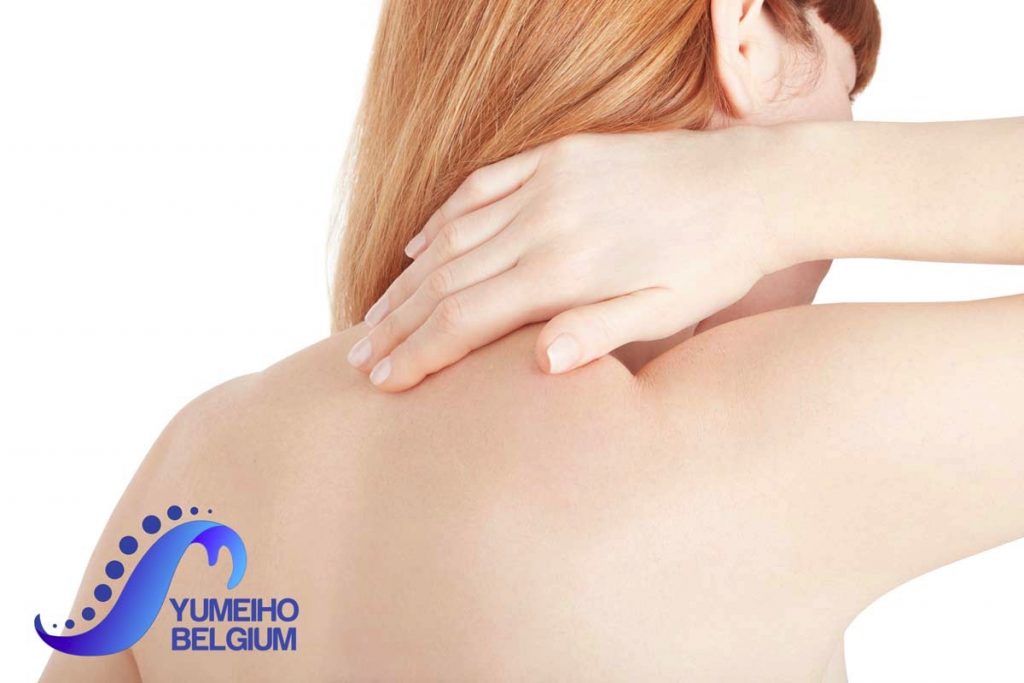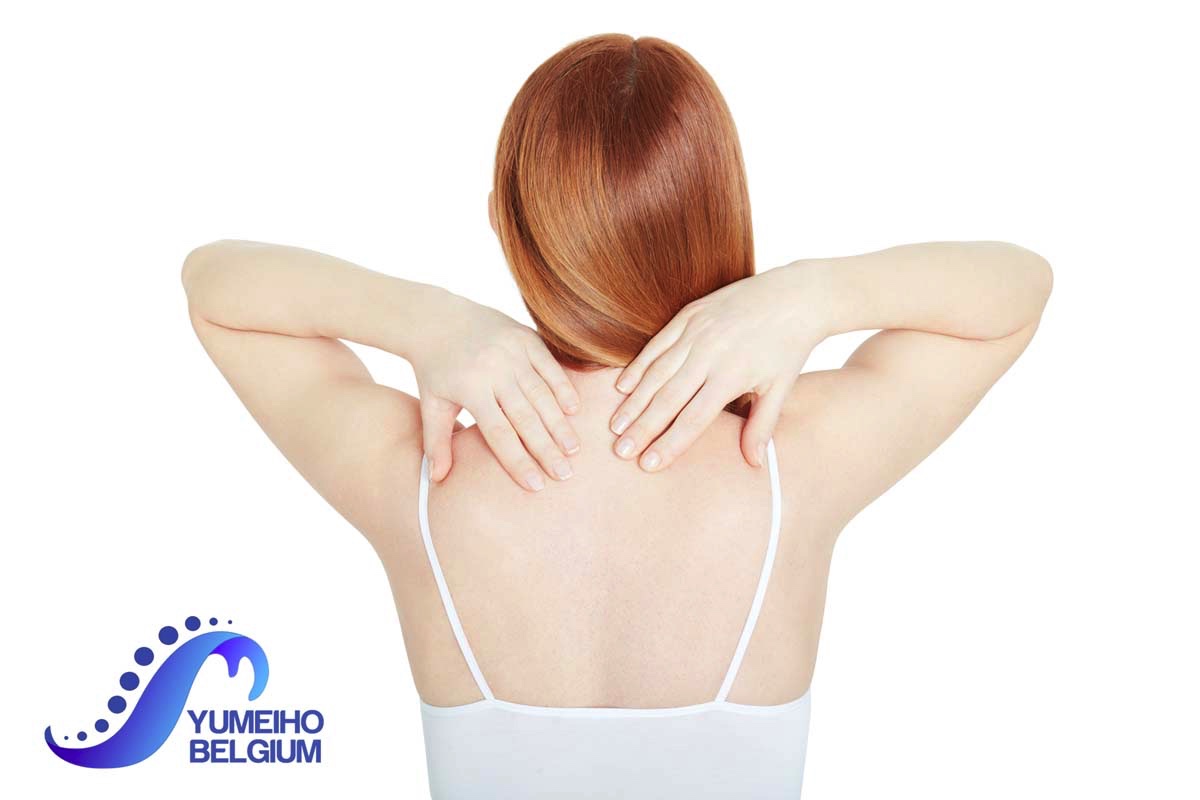Headaches or neck pain?
Headaches can have multiple causes, and they can certainly be felt in many different ways by different people. Because of this, treatment for them is sometimes very difficult, and requires special attention.
Due to the complexity of the technique and the fact that it addresses the whole body, Yumeiho® therapy is extremely effective in treating headaches and neck pain.
Up to 4 different muscle groups can be involved in headaches and neck pain.
Only by treating the human body as a whole, we can obtain good results in treating the pain.

TRAPEZIUS MUSCLE
The trapezius muscle is one of the largest superficial muscles that extend longitudinally from the occipital bone to the lower thoracic vertebrae and laterally to the spine of the scapula. Its functions are to move the scapulae and support the arm.
The trapezius has three functional regions: the superior region (descending part), which supports the weight of the arm; the intermediate region (transverse part), which retracts the scapulae; and the inferior region (ascending part), which medially rotates and depresses the scapulae.
Contraction of the trap can have two effects: movement of the scapulae when the spinal origins are stable, and movement of the spine when the scapulae are stable. Its main function is to stabilize and move the scapula.
This muscle tends to develop too much tension for postural reasons, such as forward head posture (where it has to work overtime to stabilize the head and neck due to poor alignment). Other reasons include poor breathing patterns (shallow neck breathing all day), and muscle imbalances elsewhere.
Trap muscle can lead to referred pain in the shoulder, neck and head. They also can initiate sensibility in the jaw joint muscles. Additionally, the muscle can cause biomechanical problems in the cervical and thoracic spine.
STERNOCLEIDOMASTOID MUSCLE
The sternocleidomastoid muscle (SCM) is a paired muscle in the superficial layers of the side of the neck. It is one of the largest and most superficial cervical muscles. The primary actions of the muscle are rotation of the head to the opposite side and flexion of the neck. The muscle tends to be overactive in many people we see. It is commonly recruited to help stabilize the neck/head when we adopt poor postures and positions (forward head posture). It is also an accessory muscle to breathing along with the scalene muscles, so having poor breathing patterns can also be a cause of tensed sternocleidomastoid muscle.
The symptoms for a tensed SCM can includ headache and face pain, balance problems, visual disturbances, ear and sinus symptoms, and more body wide symptoms.
TEMPORALIS MUSCLE
The temporalis muscle originates at the temporal bone and inserts at the coronoid process of the mandible, it is a fan shaped muscle on each side of the skull. It is a major muscle involved in moving the temporomandibular joint (Jaw joint muscle). Excess tension here can be a big cause of headaches. This muscle works a lot and gets brutally tight over time. Clenching the teeth due to things like stress and anxiety will greatly increase this tension.
A tensed temporalis muscle can lead to headache and toothache as well. The temporalis muscle is connected to the suboccipital muscles and shoulder muscles.
MASSETER MUSCLE
The masseter muscle originates at the zygomatic bone, inserts at the mandible, and is the strongest muscle in the human body. It is a major muscle involved in moving the temporomandibular joint (TMJ = Jaw joint). Excess tension here can be a big cause of headaches. This muscle works a lot and gets brutally tight over time. Clenching the teeth due to things like stress and anxiety will greatly increase this tension.
The masseter muscle can force headaches, toothache, tinnitus, bruxism, jaw clenching or TMJ syndrome and is connected to the suboccipital muscles + shoulder muscles. Tensions in the masseter can initiate pain points in the suboccipital muscles and shoulder region (esp. in the trapezius muscle). That means whenever you treat the masseter you always have to focus on the cervical spine and shoulder region as well!
Extra info:
Ideally, you should receive a consultation and postural treatment before and after each dental treatment. Yumeiho® is the ideal method for diagnosing and treating postural problems that may be related to dental problems. Usually they won’t appear right on or in the days after, as the human body is very good at compensating, but they can appear anytime later on.
We will talk more about these issues in a future article.

